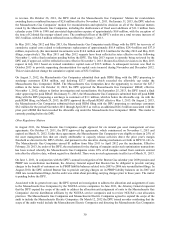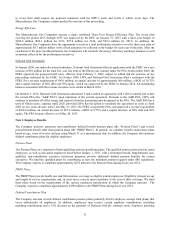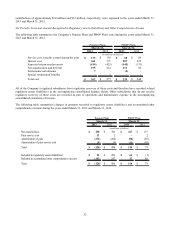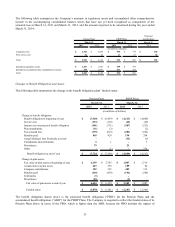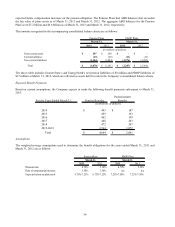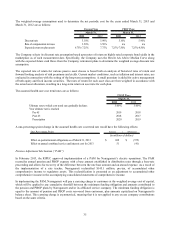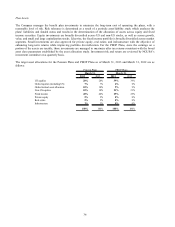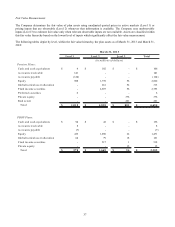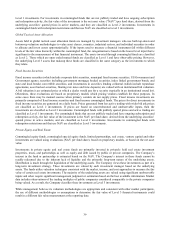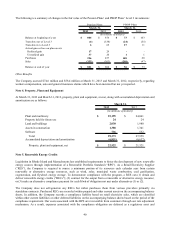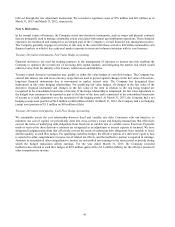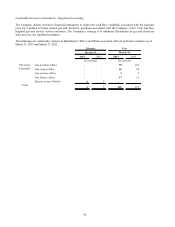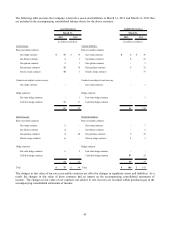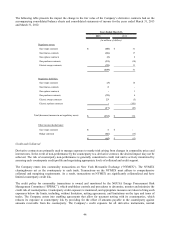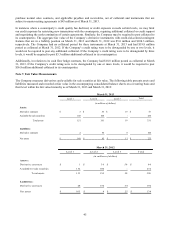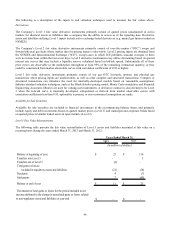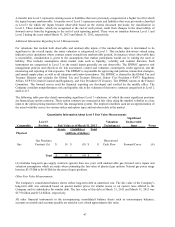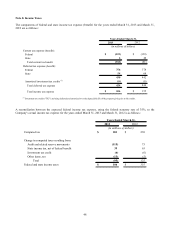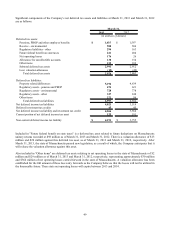National Grid 2013 Annual Report Download - page 40
Download and view the complete annual report
Please find page 40 of the 2013 National Grid annual report below. You can navigate through the pages in the report by either clicking on the pages listed below, or by using the keyword search tool below to find specific information within the annual report.39
Level 1 investments. For investments in commingled funds that are not publicly traded and have ongoing subscription
and redemption activity, the fair value of the investment is the net asset value (“NAV”) per fund share, derived from the
underlying securities’ quoted prices in active markets, and they are classified as Level 2 investments. Investments in
commingled funds with redemption restrictions and that use NAV are classified as Level 3 investments.
Global Tactical Asset Allocation
Assets held in global tactical asset allocation funds are managed by investment managers who use both top-down and
bottom-up valuation methodologies to value asset classes, countries, industrial sectors, and individual securities in order
to allocate and invest assets opportunistically. If the inputs used to measure a financial instrument fall within different
levels of the fair value hierarchy within the commingled fund, the categorization is based on the lowest level input that is
significant to the measurement of that financial instrument. The assets invested through commingled funds are classified
as Level 2. Those which are open ended mutual funds are classified as Level 1 and have observable pricing. However,
the underlying Level 3 assets that makeup these funds are classified in the same category as the investments to which
they relate.
Fixed Income Securities
Fixed income securities (which include corporate debt securities, municipal fixed income securities, US Government and
Government agency securities including government mortgage backed securities, index linked government bonds, and
state and local bonds) convertible securities, and investments in securities lending collateral (which include repurchase
agreements, asset backed securities, floating rate notes and time deposits) are valued with an institutional bid valuation.
A bid valuation is an estimated price at which a dealer would pay for a security (typically in an institutional round lot).
Oftentimes, these evaluations are based on proprietary models which pricing vendors establish for these purposes. In
some cases there may be manual sources when primary vendors do not supply prices. Fixed income investments are
primarily comprised of fixed income securities and fixed income commingled funds. The prices for direct investments in
fixed income securities are generated on a daily basis. Prices generated from less active trading with wider bid ask prices
are classified as Level 2 investments. If prices are based on uncorroborated and unobservable inputs, then the
investments are classified as Level 3 investments. Commingled funds with publicly quoted prices and active trading are
classified as Level 1 investments. For commingled funds that are not publicly traded and have ongoing subscription and
redemption activity, the fair value of the investment is the NAV per fund share, derived from the underlying securities’
quoted prices in active markets, and are classified as Level 2 investments. Investments in commingled funds with
redemption restrictions and that use NAV are classified as Level 3 investments.
Private Equity and Real Estate
Commingled equity funds, commingled special equity funds, limited partnerships, real estate, venture capital and other
investments are valued using evaluations (NAV per fund share), based on proprietary models, or based on the net asset
value.
Investments in private equity and real estate funds are primarily invested in privately held real estate investment
properties, trusts, and partnerships as well as equity and debt issued by public or private companies. The Company’ s
interest in the fund or partnership is estimated based on the NAV. The Company’ s interest in these funds cannot be
readily redeemed due to the inherent lack of liquidity and the primarily long-term nature of the underlying assets.
Distribution is made through the liquidation of the underlying assets. The Company views these investments as part of a
long-term investment strategy. These investments are valued by each investment manager based on the underlying
assets. The funds utilize valuation techniques consistent with the market, income, and cost approaches to measure the fair
value of certain real estate investments. The majority of the underlying assets are valued using significant unobservable
inputs and often require significant management judgment or estimation based on the best available information. Market
data includes observations of the trading multiples of public companies considered comparable to the private companies
being valued. As a result, the Company classifies these investments as Level 3 investments.
While management believes its valuation methodologies are appropriate and consistent with other market participants,
the use of different methodologies or assumptions to determine the fair value of Level 3 financial instruments could
result in a different fair value measurement at the reporting date.



